Jordan policymakers walk tightrope
4 June 2024

Few countries will envy Jordan right now, as one of the Israel-Palestine-adjacent countries most severely impacted both economically and politically by the inevitable spillover of the war in Gaza.
Economic growth in Jordan has inevitably been hit by the conflict, especially in the country’s trade and tourism sectors. Domestic opposition to the war has meanwhile left Ammann walking a tightrope – opposing Israel while remaining part of a broad regional Western-backed coalition that saw Jordan play its part in stemming missile attacks launched by Iran at Israel in April.
The Gaza war is only one of a number of pitfalls confronting the government, which currently faces an unemployment rate of about 22%, desperate water scarcity, and the presence of 1.3 million Syrian refugees topping up the country’s existing population of refugees from Iraq, Palestine and elsewhere.
In these invidious circumstances, the country has performed well, but has also suffered negative consequences.
“Jordan has preserved economic and political stability despite significant external shocks, including social instability in the region (Arab Spring) and wars in neighbouring countries (Iraq and Syria), but these shocks have led to lower growth and significant government debt build-up,” says Erich Arispe, a senior director in Fitch Ratings’ sovereigns group.
For now, Jordan appears to be carrying off the delicate diplomatic work in relation to Israel. It is playing a critical role in the aid effort to Gaza, distancing itself from its neighbour by withdrawing its ambassador from Tel Aviv, and mothballing a planned water-for-energy project.
But it has so far resisted pressure from domestic protesters to adopt a more assertive stance towards Israel – not least since the government is wary of putting its relationship with the US under stress and threatening the $1.45bn in annual aid it receives from Washington.
Jordan’s reliance on Israeli water supplies will also play a part in Amman’s calculus. The kingdom typically sources around 80% of its natural gas from Israel’s offshore Leviathan field.
Despite deep antipathy to Israeli Prime Minister Benjamin Netanyahu’s government, the reality is that Jordan is locked into a cooperative relationship with its neighbour, including through the Hashemite dynasty’s custodianship of the Al-Aqsa mosque compound in Jerusalem.
Economic effects
While Jordan is unlikely to take radical steps to change its relationship with its neighbour, it remains deeply impacted by Israel’s actions, with the economic implications of the conflict in Gaza being felt nationwide.
The Jordan Hotel Association reported that about half of its hotel reservations were cancelled in October 2023. Fitch Ratings expects that lower tourism inflows, weaker external demand and continued regional political uncertainty will slow growth to 2.3% in 2024, from 2.6% in 2023.
“Nevertheless, we expect that the decline in US and European tourists will be partly compensated by resilience in Jordanian expats and regional tourists. Before the start of the Gaza conflict, Jordanian expats and Arab and GCC tourists accounted for almost three-quarters of total visitors,” says Arispe.
Although the IMF warned in May that the continuation of the war and the trade route disruptions in the Red Sea are affecting sentiment, trade and tourism, barring a significant escalation, the Jordanian economy should be able to navigate the challenges.
While Jordan is primed to run a large current account deficit, at a projected 6.4% of GDP in 2024, this is still lower than the 6.8% deficit recorded in 2023.
According to Fitch, the general government deficit will ease to 2.6% in 2024 and 2.4% in 2025, as expenditure restraint will balance lower-than-budgeted revenue growth and higher interest payments.
“One of the main economic challenges for policymakers is to lift growth prospects to support a sustainable reduction in government debt,” says Arispe.
In its May rating affirmation, Fitch estimated that general government debt (consolidating central government debt holdings of the Social Security Investment Fund and including the Water Authority of Jordan debt and NEPCO guaranteed debt) rose to 93.3% of GDP at the end of 2023.
Although it forecast debt will decline to 91.3% by 2025, this will remain significantly above the projected 53.6% median for sovereigns rated ‘BB’.
“Jordan’s fiscal strategy aims to lower debt to 80% of GDP by 2028 based on a combination of revenue increases, through measures directed at broadening the tax base, and expenditure restraint,” says Arispe.
“Nevertheless, Fitch considers that the sustainability of the current fiscal strategy will depend on the success of reforms aimed at lifting growth prospects combined with increased employment.”
External support
For all the Hashemite kingdom’s vulnerability to regional conflicts, its strategic position also carries advantages. Jordan has attracted substantial external support in the past year, drawing on its status as a regional source of stability.
Early in 2024, the IMF began a new four-year, $1.2bn Extended Fund Facility (EFF).
“From a broader perspective, one of Jordan’s strengths in terms of creditworthiness is the strong relations with multilateral organisations and allies, including the US and partners in the region, which supports Jordan’s financing flexibility. The sovereign is projected to receive total foreign assistance of $3.5bn (6.5% of projected GDP) in 2024,” says Arispe.
In addition, Jordan is attracting significant Gulf investment. In late May, the country’s Investment Ministry announced that Abu Dhabi Development Holding Company (ADQ) had completed the establishment of an infrastructure investment fund company in Jordan. This deal was first mooted during King Abdullah’s visit to Abu Dhabi in 2023.
This company will invest in infrastructure and development projects worth $5bn.
The government also remains committed to its reform agenda, for example, by gradually increasing water utility tariffs last year.
“We expect, though, that the pace of reform progress will continue to depend on the objective of preserving social stability, the resistance of vested interests and institutional capacity constraints,” says Arispe.
Reducing high unemployment is a government priority, especially among women and younger people.
The government is moving ahead with the first phase of its ambitious Economic Modernisation Vision 2023-33, which aims to increase growth potential (5%) and create 1 million jobs over the next decade through higher private investment in strategic sectors.
“The authorities have made progress in terms of digitisation of government procedures, most notably those related to investment, and public administration reform,” says Arispe.
“Nevertheless, increased geopolitical risks make it harder for the government to achieve the 2025 targets under the Vision’s 2023-25 first phase, including reaching 3% growth and exports reaching $13.7bn.”
Above all, the government will hope that external events will not yet have a negative bearing on an ambitious political reform programme that is invariably contingent on favourable regional relations.
Exclusive from Meed
-
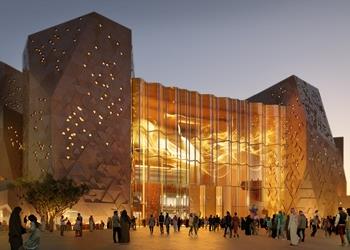 Chinese contractor wins $1.5bn Diriyah Arena deal
Chinese contractor wins $1.5bn Diriyah Arena deal16 July 2025
-
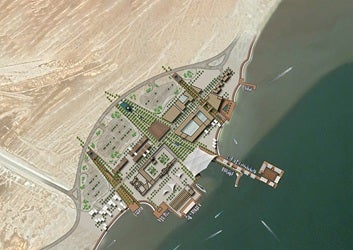
-
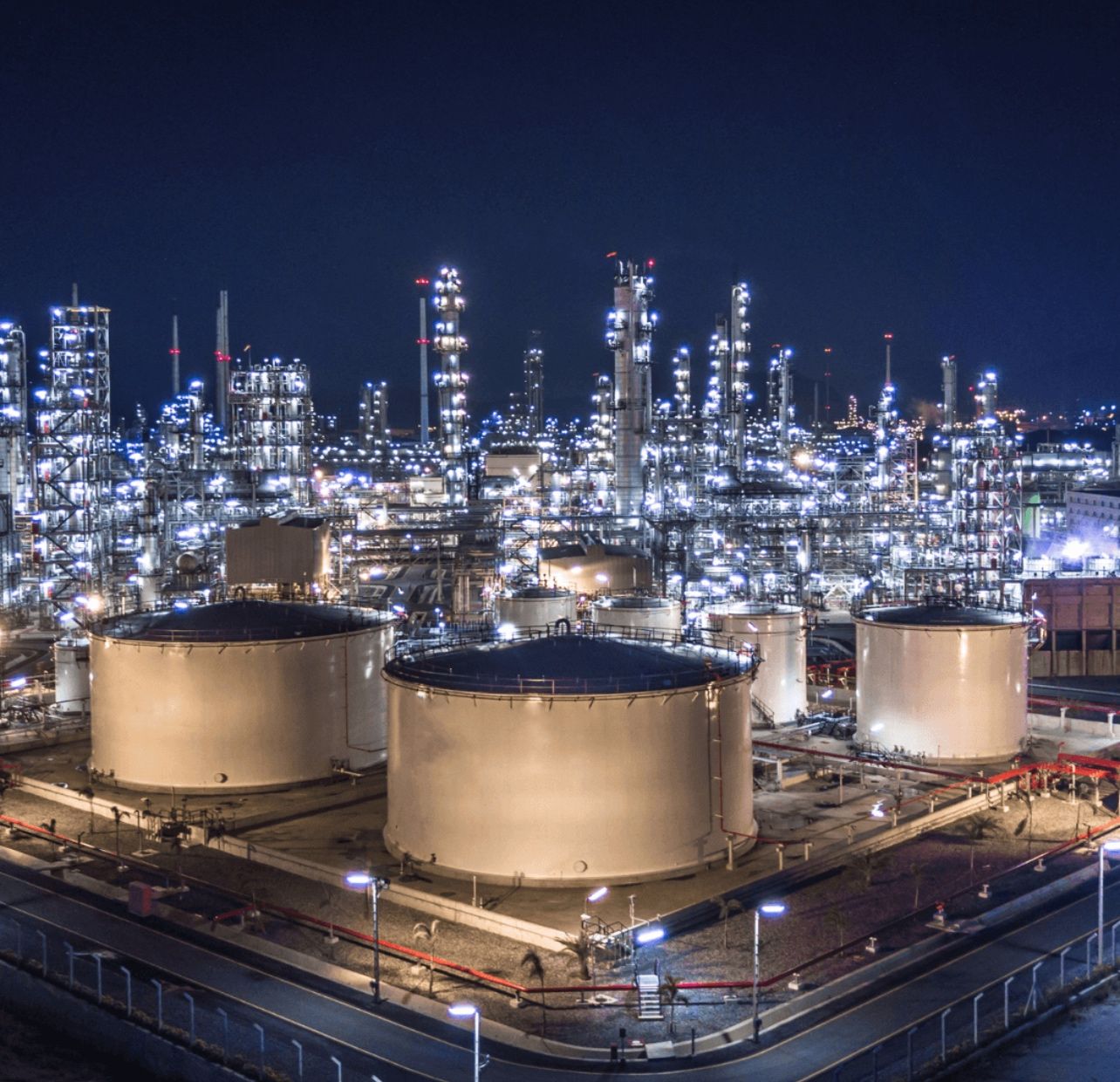 Contractors submit bids for Taziz’s Project Salt
Contractors submit bids for Taziz’s Project Salt16 July 2025
-
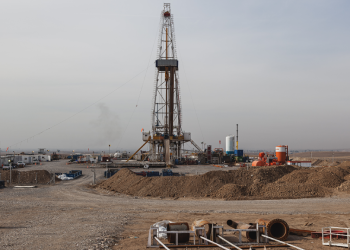 Drone strikes damage Iraq oil infrastructure
Drone strikes damage Iraq oil infrastructure16 July 2025
-
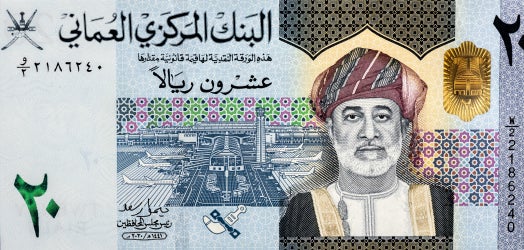 Oman recovers investment-grade credit rating
Oman recovers investment-grade credit rating16 July 2025
All of this is only 1% of what MEED.com has to offer
Subscribe now and unlock all the 153,671 articles on MEED.com
- All the latest news, data, and market intelligence across MENA at your fingerprints
- First-hand updates and inside information on projects, clients and competitors that matter to you
- 20 years' archive of information, data, and news for you to access at your convenience
- Strategize to succeed and minimise risks with timely analysis of current and future market trends

Related Articles
-
 Chinese contractor wins $1.5bn Diriyah Arena deal
Chinese contractor wins $1.5bn Diriyah Arena deal16 July 2025

Register for MEED’s 14-day trial access
Beijing-headquartered China Harbour Engineering Company has won a SR5.7bn ($1.5bn) contract to build the Arena Block assets in the Boulevard Southwest section of the DG2 area of the Diriyah gigaproject in Saudi Arabia.
The Arena Block will include Diriyah Arena, which is designed by UK-based HKS Architects, as well as three office buildings and a parking facility.
Diriyah Arena will cover an area of about 74,000 square metres and will have a capacity of 20,000 spectators.
In April, MEED exclusively reported that China Harbour Engineering Company had emerged as the frontrunner for the project after selected firms were invited to submit their best-and-final offers for the package.
Diriyah Company opened commercial bids for the project in January, MEED reported at the time.
The company is expected to award more multibillion-dollar contracts this year. Earlier in July, MEED reported that the company had awarded a $600m contract to Italian contractor WeBuild for a package at the Diriyah Square project.
The contract relates to construction works on package three of the Diriyah Square project. It involves the finishing and mechanical, electrical and plumbing works on more than 70 buildings and public spaces within Diriyah Square.
Diriyah gigaproject
The Diriyah masterplan envisages the city as a cultural and lifestyle tourism destination. Located northwest of Riyadh’s city centre, it will cover 14 square kilometres and combine 300 years of history, culture and heritage with hospitality facilities.
The company awarded several significant contracts last year, including three contracts worth over SR21bn ($5.5bn). These included an estimated $2bn contract awarded to a joint venture of El-Seif Engineering & Contracting and China State to build the North Cultural District.
In late July 2024, Diriyah also awarded a $2.1bn package to a joint venture of local contractor Albawani and Qatar’s Urbacon to construct assets in the Wadi Safar district of the gigaproject.
In December, MEED reported that Diriyah Company had awarded an estimated SR5.8bn ($1.5bn) contract to the joint venture of local firm Nesma & Partners and the local branch of Man Enterprise for its Jabal Al-Qurain Avenue cultural district, located in the northern district of the Diriyah Gate project.
Once complete, Diriyah will have the capacity to house 100,000 residents and visitors.
 READ THE JULY 2025 MEED BUSINESS REVIEW – click here to view PDF
READ THE JULY 2025 MEED BUSINESS REVIEW – click here to view PDFUAE and Turkiye expand business links; Renewed hope lies on the horizon for trouble-beset Levant region; Gulf real estate momentum continues even as concerns emerge
Distributed to senior decision-makers in the region and around the world, the July 2025 edition of MEED Business Review includes:
> AGENDA: UAE-Turkiye trade gains momentum> INTERVIEW 1: Building on UAE-Turkiye trade> INTERVIEW 2: Turkiye's Kalyon goes global> INTERVIEW 3: Strengthening UAE-Turkiye financial links> INTERVIEW 4: Turkish Airlines plans further growth> CURRENT AFFAIRS: Middle East tensions could reduce gas investments> GCC REAL ESTATE: Gulf real estate faces a more nuanced reality> PROJECTS MARKET: GCC projects market collapses> INTERVIEW 5: Hassan Allam eyes role in Saudi Arabia’s transformation> INTERVIEW 6: Aseer region seeks new investments for Saudi Arabia> LEADERSHIP: Nuclear power makes a global comeback> LEVANT MARKET FOCUS: Levant states wrestle regional pressures> GULF PROJECTS INDEX: Gulf projects index continues climb> CONTRACT AWARDS: Mena contract award activity remains subdued> ECONOMIC DATA: Data drives regional projects> OPINION: A farcical tragedy that no one can endTo see previous issues of MEED Business Review, please click herehttps://image.digitalinsightresearch.in/uploads/NewsArticle/14275443/main.jpg -
 PIF subsidiary prepares Eastern Province project tender
PIF subsidiary prepares Eastern Province project tender16 July 2025

Register for MEED’s 14-day trial access
Saudi Arabia's Al-Uqair Area Development Company (UADC), which is backed by the kingdom's sovereign wealth vehicle, the Public Investment Fund (PIF), is expected to issue a tender in August for infrastructure work on its upcoming mixed-use project.
The project is located in the Al-Uqair area of Al-Ahsa Governorate in the Eastern Province of Saudi Arabia.
The client issued the expression of interest notice to contractors on 9 July, with a bid submission deadline of 13 July.
The package, which is known as Yem Almina, involves the development of infrastructure works on the project.
UAE-based Compass Project Consulting is the project management consultant.
The Al-Uqair project will be developed over an area of about 30 square kilometres.
The project is divided into three main phases. The first phase will cover the construction of hotels, waterfront chalets, beach houses, residential apartments, food and beverage facilities, heritage assets and associated infrastructure works. It is located about 70 kilometres (km) from Dammam and Hafouf, and about 400km from Riyadh.
UADC was established in 2023 as a fully-owned PIF subsidiary. The company is mandated to revive Al-Uqair as a mixed-use coastal destination. The first port in the Arabian Gulf was established in Al-Uqair.
The project is part of Riyadh’s strategy to boost leisure tourism in the kingdom. According to UK data analytics firm GlobalData, leisure tourism in Saudi Arabia has experienced significant growth in recent years. Domestic leisure tourism trips have increased to 33.76 million in 2023 from 16.74 million in 2018. International tourist arrivals for recreational purposes have increased by 600% from 2018 to 2023.
GlobalData also expects the construction industry in Saudi Arabia to grow by 4% in real terms in 2025, before recording an annual average growth of 5.4% in 2026-29.
The commercial construction sector is expected to grow by 3.7% in real terms in 2025 before registering an annual average growth rate of 3.7% in 2026-29, supported by investments in the construction of hotels, data centres and sports stadiums.
 READ THE JULY 2025 MEED BUSINESS REVIEW – click here to view PDF
READ THE JULY 2025 MEED BUSINESS REVIEW – click here to view PDFUAE and Turkiye expand business links; Renewed hope lies on the horizon for trouble-beset Levant region; Gulf real estate momentum continues even as concerns emerge
Distributed to senior decision-makers in the region and around the world, the July 2025 edition of MEED Business Review includes:
> AGENDA: UAE-Turkiye trade gains momentum> INTERVIEW 1: Building on UAE-Turkiye trade> INTERVIEW 2: Turkiye's Kalyon goes global> INTERVIEW 3: Strengthening UAE-Turkiye financial links> INTERVIEW 4: Turkish Airlines plans further growth> CURRENT AFFAIRS: Middle East tensions could reduce gas investments> GCC REAL ESTATE: Gulf real estate faces a more nuanced reality> PROJECTS MARKET: GCC projects market collapses> INTERVIEW 5: Hassan Allam eyes role in Saudi Arabia’s transformation> INTERVIEW 6: Aseer region seeks new investments for Saudi Arabia> LEADERSHIP: Nuclear power makes a global comeback> LEVANT MARKET FOCUS: Levant states wrestle regional pressures> GULF PROJECTS INDEX: Gulf projects index continues climb> CONTRACT AWARDS: Mena contract award activity remains subdued> ECONOMIC DATA: Data drives regional projects> OPINION: A farcical tragedy that no one can endTo see previous issues of MEED Business Review, please click herehttps://image.digitalinsightresearch.in/uploads/NewsArticle/14274533/main4142.jpg -
 Contractors submit bids for Taziz’s Project Salt
Contractors submit bids for Taziz’s Project Salt16 July 2025

Register for MEED’s 14-day trial access
Contractors have submitted technical bids to Abu Dhabi National Oil Company (Adnoc) for a project to build a cluster of three chemicals-producing plants in the Taziz Industrial Chemicals Zone in Ruwais, Abu Dhabi.
The three chemicals plants will produce ethylene dichloride (EDC), chlor alkali and polyvinyl chloride (PVC) and are part of a scheme known as Project Salt.
The project is among the main investments in the first phase of development for the upcoming petrochemicals derivatives complex by Taziz.
Contractors submitted technical bids for engineering, procurement and construction (EPC) works on Project Salt by Adnoc's deadline of 15 July, according to sources.
The following contractors, among others, are understood to be bidding for Project Salt, sources told MEED:
- China National Chemical Engineering Company / China Chengda Engineering Company / China Tianchen Engineering Corporation
- Larsen & Toubro Energy Hydrocarbon (India)
- Samsung E&A (South Korea)
The previous deadlines for contractors to submit technical and commercial bids for the project were 15 June and 23 July, respectively.
Taziz – a 60:40 joint venture of Adnoc and Abu Dhabi’s industrial holding company ADQ – first announced the EDC, chlor alkali and PVC plants in December 2021. India’s Reliance Industries was named as the main investor in the chemicals plants at the time.
Reliance is understood to have pulled out of Project Salt and has been replaced by France-based Kem One, MEED previously reported.
MEED reported in June last year on the award of front-end engineering and design (feed) contracts for the three chemicals production plants.
Germany-headquartered Thyssenkrupp Uhde won feed contracts for the EDC and chlor alkali plants. France-based Technip Energies won the feed contract for the PVC facility.
The planned EDC plant will utilise chlorine from the associated chlor alkali plant as its main feedstock and will have a production capacity of up to 1.2 million tonnes a year (t/y).
Part of the EDC output will, in turn, be used as feedstock by the PVC plant, which is planned to have a production capacity of 350,000 t/y.
Surplus quantities of EDC and caustic soda from the chlor alkali plant are intended to be exported.
Taziz Industrial Chemicals Zone
Since 2021, Taziz has attracted investments from several foreign investors for its planned chemicals projects in the under-construction Taziz Industrial Chemicals Zone in Ruwais.
Taziz has planned seven petrochemicals derivatives projects as part of the first phase of its industrial chemicals zone.
UK-headquartered Wood Group has performed the feed works on the seven projects, which are:
Anchor product
End use
Chlor alkali
Water treatment, metallurgy and textiles
Ethylene dichloride
Housing, infrastructure and consumer goods
Maleic anhydride
Piping, construction and heavy transport
Methanol
Energy, consumer goods and pharmaceuticals
Blue ammonia
Agriculture, apparel and energy
Isopropyl alcohol
Healthcare and cosmetics
Elastomers
Automobiles, adhesives, food production and storage
Chemicals production is a priority sector for Operation 300bn, the UAE’s industrial growth strategy.
The strategy is being overseen by the Industry & Advanced Technology Ministry, which aims to raise the UAE industrial sector’s contribution to the national GDP to AED300bn ($81.7bn) by 2031.
In December 2021, Taziz secured agreements from eight UAE-based entities for investments in its planned chemicals projects in Ruwais. The agreements marked the first domestic public-private partnership in Abu Dhabi’s downstream oil, gas and petrochemicals sector.
ALSO READ: Local firms invest in Taziz industrial complex
In addition to the three chemicals plants planned under Project Salt, a joint venture of UAE-based Fertiglobe, South Korea’s GS Energy Corporation and Japanese investment firm Mitsui & Company has invested in a “world-scale” blue ammonia production facility in the Ruwais petrochemicals derivatives complex.
The Fertiglobe/GS Energy/Mistui joint venture awarded Italian contractor Tecnimont the EPC contract for the project in May 2024. Construction on the facility started in June last year.
Separately, in February, Taziz awarded South Korean contractor Samsung E&A the main EPC contract to build the UAE’s first methanol plant in the Taziz Industrial Chemicals Zone. The value of the EPC contract won by Samsung E&A is $1.7bn, and the duration of works is 44 months.
The nameplate production capacity of the planned methanol complex is 5,000 metric tonnes a day, or 1.8 million metric t/y. Switzerland-based energy and chemicals company Proman is a joint investor in the methanol project.
Regarding infrastructure to support the various projects, Taziz awarded three EPC contracts totalling $2bn in November.
Abu Dhabi government-owned NMDC Group was awarded the EPC contract to build a chemicals port. Once complete, the port will facilitate the export of chemicals and fuels.
Singapore-based Rotary Engineering won the EPC contract for a chemicals terminal known as Project Landing. The contract includes developing storage facilities, tank-to-jetty pipelines, jetty-to-tank pipelines, inter-site pipelines and liquid product storage. Taziz is building the chemicals-handling terminal in partnership with Netherlands-based midstream energy company Advario.
Abu Dhabi-based Al-Geemi Contracting was awarded the EPC contract to develop essential infrastructure for the 17-square-kilometre Taziz chemicals production site, including internal roads, security fencing and buildings.
Contracts have also been awarded for developing a centralised utilities facility for the Taziz Industrial Chemicals Zone, which will include power transmission, steam, cooling water and water units.
Adnoc signed an agreement with Abu Dhabi National Energy Company (Taqa) in June 2021 to develop a cogeneration power facility in Ruwais. In December, the partners awarded a $1bn contract to Kuwait-based Alghanim International for the project, and the contractor started construction of the facility in February this year.
Alghanim International, in turn, awarded a $67m sub-contract to Riyadh-based water utility developer Water & Environment Technologies Company (Wetico) for the comprehensive water facilities package of the cogeneration power facility, which includes the construction of a seawater desalination plant, demineralisation plant, condensate polishing unit and effluent treatment plant.
ALSO READ: Fertiglobe expects Rabdan final investment decision in 2026
 READ THE JULY 2025 MEED BUSINESS REVIEW – click here to view PDF
READ THE JULY 2025 MEED BUSINESS REVIEW – click here to view PDFUAE and Turkiye expand business links; Renewed hope lies on the horizon for trouble-beset Levant region; Gulf real estate momentum continues even as concerns emerge
Distributed to senior decision-makers in the region and around the world, the July 2025 edition of MEED Business Review includes:
> AGENDA: UAE-Turkiye trade gains momentum> INTERVIEW 1: Building on UAE-Turkiye trade> INTERVIEW 2: Turkiye's Kalyon goes global> INTERVIEW 3: Strengthening UAE-Turkiye financial links> INTERVIEW 4: Turkish Airlines plans further growth> CURRENT AFFAIRS: Middle East tensions could reduce gas investments> GCC REAL ESTATE: Gulf real estate faces a more nuanced reality> PROJECTS MARKET: GCC projects market collapses> INTERVIEW 5: Hassan Allam eyes role in Saudi Arabia’s transformation> INTERVIEW 6: Aseer region seeks new investments for Saudi Arabia> LEADERSHIP: Nuclear power makes a global comeback> LEVANT MARKET FOCUS: Levant states wrestle regional pressures> GULF PROJECTS INDEX: Gulf projects index continues climb> CONTRACT AWARDS: Mena contract award activity remains subdued> ECONOMIC DATA: Data drives regional projects> OPINION: A farcical tragedy that no one can endTo see previous issues of MEED Business Review, please click herehttps://image.digitalinsightresearch.in/uploads/NewsArticle/14274507/main2617.jpg -
 Drone strikes damage Iraq oil infrastructure
Drone strikes damage Iraq oil infrastructure16 July 2025
Register for MEED’s 14-day trial access
An oil field operated by US-based HKN Energy in Duhok Province in Iraq's semi-autonomous region of Kurdistan was set on fire after being hit by a drone missile, heightening concerns about security in the region.
HKN Energy issued a statement saying it had stopped production at the Sarsang oil field after the attack. No casualties have been reported.
The attack on the Sarsang field, which took place early in the morning on 15 July, was the latest in a series of similar attacks launched recently against oil facilities in Iraqi Kurdistan. No group has claimed responsibility for the attack.
The attack took place on the same day that HKN Energy announced it had signed a preliminary agreement with Iraq’s Oil Ministry to develop the Himreen oil field in northern Iraq.
HKN Energy is a private US oil and gas company, owned by Hillwood Energy – part of the Hillwood group, which was founded by real estate developer and businessman Ross Perot Jr. The company is active in Iraqi Kurdistan.
The attack on the Sarsang oil field occurred less than 24 hours after a drone attack on the Khurmala oil field in Iraq's Erbil Province.
According to the Natural Resources Ministry of the Kurdistan Regional Government, two drones loaded with explosives struck the Khurmala field late on 14 July, damaging water pipes but causing no casualties.
MEED’s June 2025 report on Iraq includes:
> COMMENT: Iraq maintains its pace, for now
> GOVERNMENT & ECONOMY: Iraq’s economy faces brewing storm
> OIL & GAS: Iraqi energy project value hits decade-high level
> PIPELINES: Revival of Syrian oil export route could benefit Iraq
> POWER: Iraq power sector turns a page
> CONSTRUCTION: Iraq pours billions into housing and infrastructure projects
> DATABANK: Iraq forecast dips on lower oil priceshttps://image.digitalinsightresearch.in/uploads/NewsArticle/14271724/main.png -
 Oman recovers investment-grade credit rating
Oman recovers investment-grade credit rating16 July 2025
Register for MEED’s 14-day trial access
Oman’s credit rating has returned to investment grade by the reckoning of two of the three main credit ratings agencies, after Moody’s upgraded its rating earlier in July, following a similar move by S&P last September.
Moody’s upgraded Oman’s credit rating from Ba1 to Baa3 with a stable outlook in July 2025, becoming the second ratings agency to raise the status of Oman's sovereign credit rating back into investment-grade range.
S&P upgraded Oman’s rating from BB+ to BBB- with a stable outlook in September 2024, in the first promotion of the sovereign back to investment grade after seven years in junk territory due to a decline in oil revenues owing to low prices and the Covid-19 pandemic.
The combined upgrade by both agencies makes Oman’s investment-grade status the majority opinion. Fitch, meanwhile, affirmed its BB+ rating for Oman in December 2024, but also significantly changed the sultanate’s outlook from stable to positive.
Moody’s, for its part, cited structural reforms and strengthened macroeconomic fundamentals and fiscal indicators – most critically, the country’s reduced public debt as a result of Muscat’s lower public spending and return to a 2.8% fiscal surplus.
The twin upgrade from S&P and Moody’s, together with the positive assessment from Fitch, should serve to lower the cost of borrowing for Oman, including by potentially allowing it to restructure existing debt and lower its interest payments moving forward.
Another significant part of Muscat’s recent structural reforms was the consolidation of state-owned entities operating under the Oman Investment Authority (OIA), and the 19.3% reduction in the aggregated debt associated with OIA assets.
The effective restructuring of debts among OIA holdings, alongside the reduction of government guarantees on loans for major companies, including state energy comglomerate OQ, Asyad and Nama – and the halting of new guarantees – all served to improve Muscat’s credit standing.
The structural reform programme continues in Oman, which in its latest major economic policy development, announced the planned introduction of 5% income tax in the country in 2028.
Such ongoing measures are in line with Muscat’s heightened need to wean itself off a boom-bust spending cycle linked to oil prices and instead diversify its government tax and revenue base to fund public spending on a more sustainable basis.
 READ THE JULY 2025 MEED BUSINESS REVIEW – click here to view PDF
READ THE JULY 2025 MEED BUSINESS REVIEW – click here to view PDFUAE and Turkiye expand business links; Renewed hope lies on the horizon for trouble-beset Levant region; Gulf real estate momentum continues even as concerns emerge
Distributed to senior decision-makers in the region and around the world, the July 2025 edition of MEED Business Review includes:
> AGENDA: UAE-Turkiye trade gains momentum> INTERVIEW 1: Building on UAE-Turkiye trade> INTERVIEW 2: Turkiye's Kalyon goes global> INTERVIEW 3: Strengthening UAE-Turkiye financial links> INTERVIEW 4: Turkish Airlines plans further growth> CURRENT AFFAIRS: Middle East tensions could reduce gas investments> GCC REAL ESTATE: Gulf real estate faces a more nuanced reality> PROJECTS MARKET: GCC projects market collapses> INTERVIEW 5: Hassan Allam eyes role in Saudi Arabia’s transformation> INTERVIEW 6: Aseer region seeks new investments for Saudi Arabia> LEADERSHIP: Nuclear power makes a global comeback> LEVANT MARKET FOCUS: Levant states wrestle regional pressures> GULF PROJECTS INDEX: Gulf projects index continues climb> CONTRACT AWARDS: Mena contract award activity remains subdued> ECONOMIC DATA: Data drives regional projects> OPINION: A farcical tragedy that no one can endTo see previous issues of MEED Business Review, please click herehttps://image.digitalinsightresearch.in/uploads/NewsArticle/14266992/main.jpg

